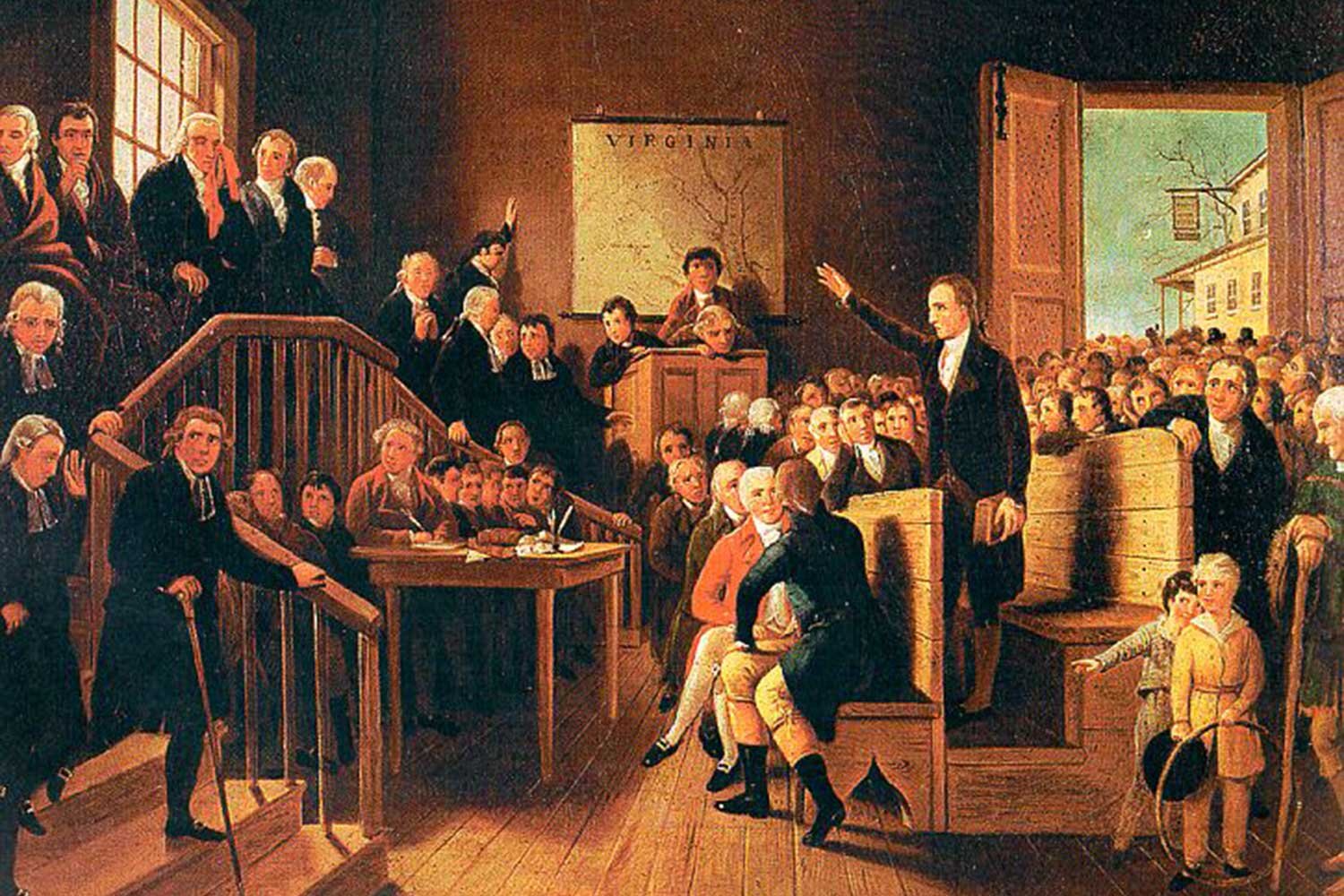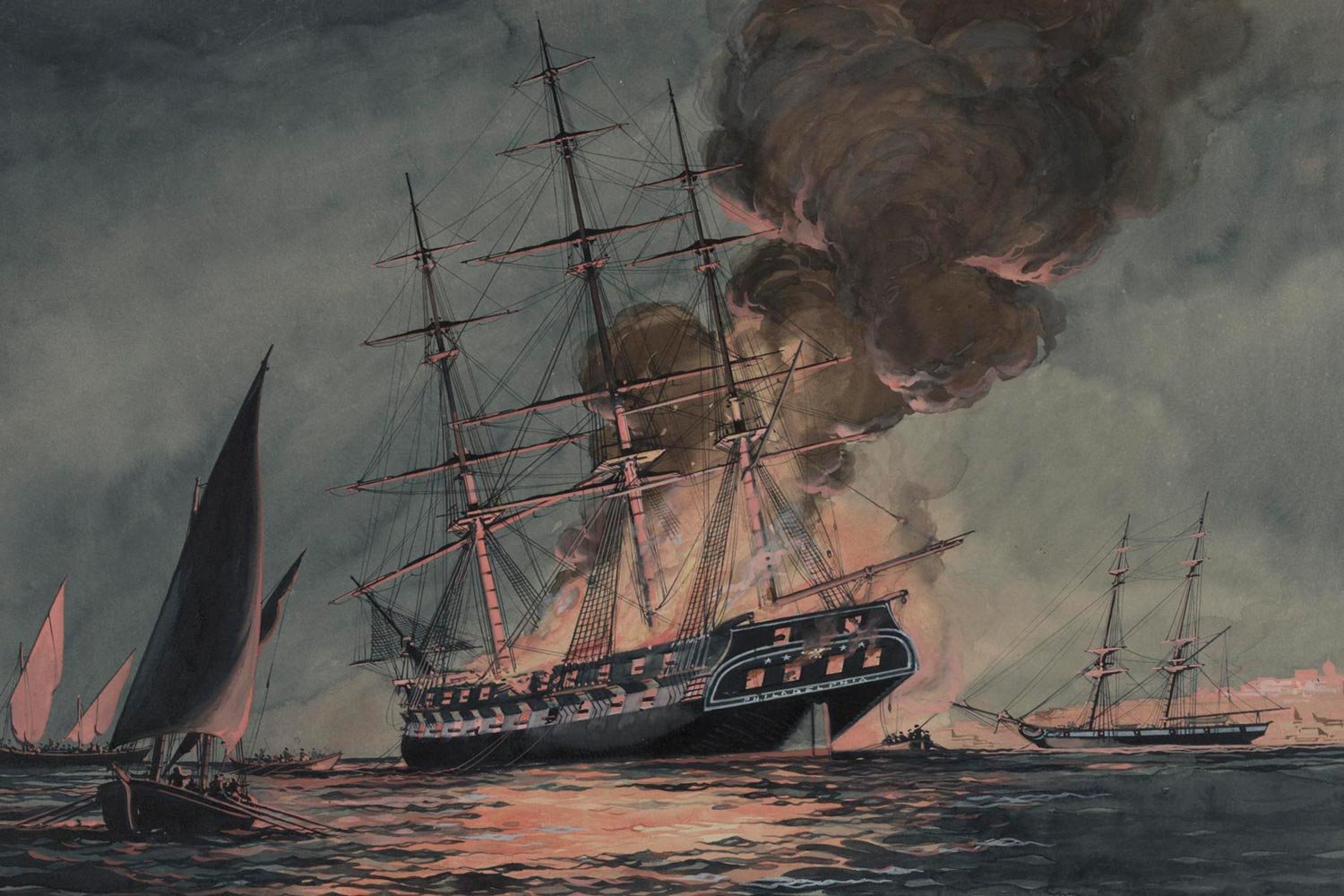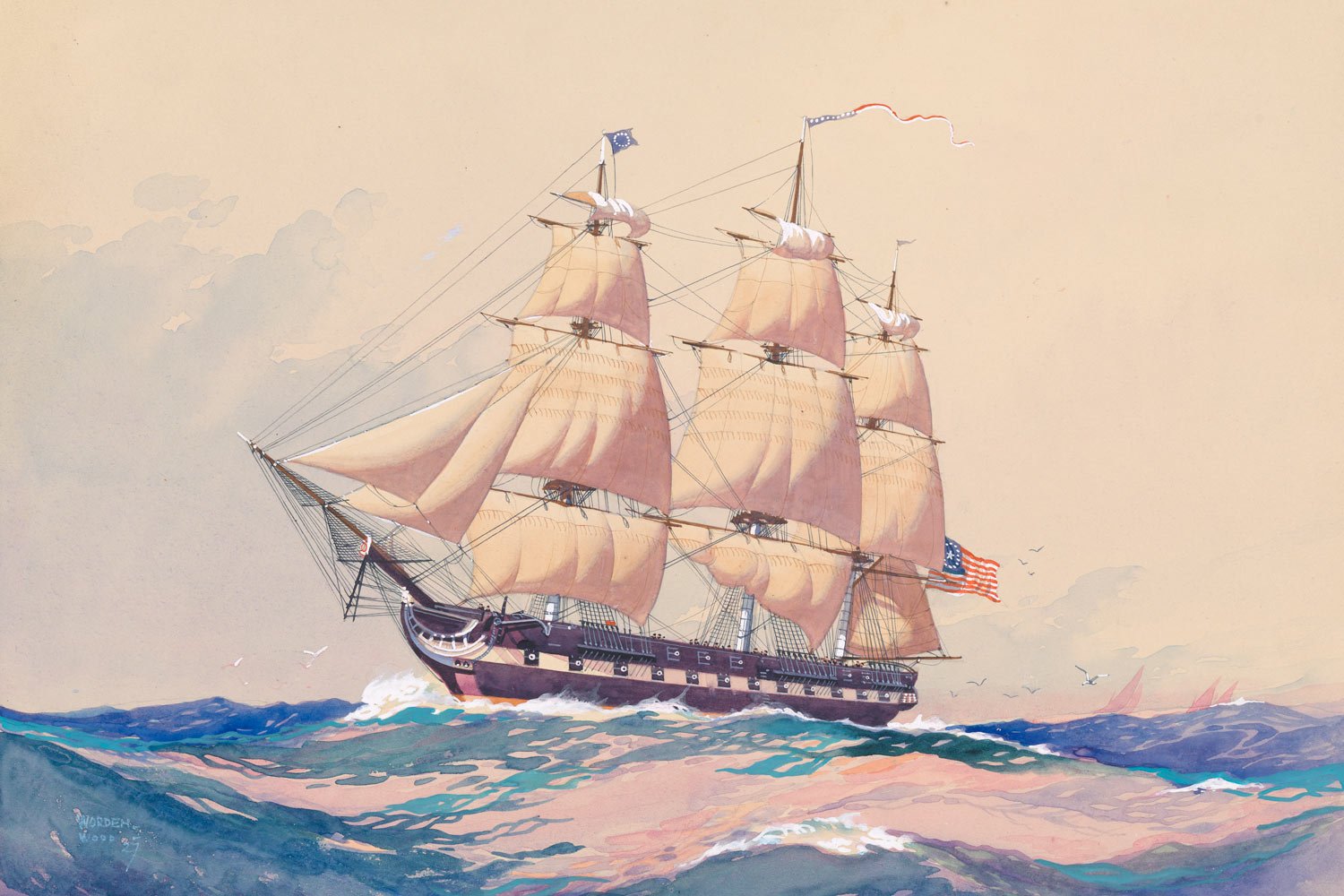

American Judiciary, Part 2: An Independent Federal Judiciary
One of the foundational governing principles of the Constitution created at the Philadelphia Convention in the summer of 1787 was a separation of powers between the national legislative, executive, and judicial branches. But while significant operating concepts and responsibilities were set forth for Congress and the Executive in the Constitution, the delegates barely addressed the specific structure of the Judicial branch.

American Judiciary, Part 1: Courts in Early America
The court system in Colonial America, not surprisingly, mirrored that of Great Britain and became one of the great sources of discontent as American colonists moved towards independence. The main issue was over who would control or have the greatest influence on the judiciary.

The Barbary Wars, Part 5: U.S. Navy Triumphant in Tripoli
Commodore Edward Preble assembled his considerable American fleet just outside Tripoli harbor in August 1804, determined to punish the city and its corsairs, and force Yusuf Karamanli, the Dey of Tripoli, to sue for peace.

The Barbary Wars, Part 4: To the Shores of Tripoli
William Eaton led the first successful invasion of a foreign land by the United States when in 1804 he led a handful of Marines and a hodgepodge assembly of Christian mercenaries and unruly Arabs to conquer the Tripolitan port city of Derne.

The Barbary Wars, Part 3: “The Most Daring Act of the Age”
Captain William Bainbridge managed to run the USS Philadelphia hard aground on a submerged reef in Tripoli harbor on October 31, 1803, and this pristine frigate, one of the top ships in the United States Navy was now in grave danger of falling into the hands of the Tripolitan pirates.

The Barbary Wars, Part 2: The Philadelphia is Lost
Soon after Thomas Jefferson was sworn in as our country’s third president on March 4, 1801, Yusuf Karamanli, the Pasha of Tripoli, decided to renounce the existing treaty his North African province had with the United States. Unhappy with the amount of his annual tribute and feeling under-compensated compared to his fellow tyrant, the Dey of Algiers, Karamanli demanded that the new President give him a one-time gift of $250,000 and an annual tribute of $20,000.

Americana Corner’s 250th Article Launches Barbary Wars Series
The Treaty of Paris of 1783 that ended the American Revolution, brought the United States its long-desired liberty and independence from Great Britain. But with that separation came the loss of protection on the high seas for American merchant ships by the Royal Navy. And the removal of that security blanket had painful and expensive consequences for the young country which were first felt several thousand miles away, in the waters of the Mediterranean Sea.

Lewis and Clark Expedition, Part 10: Homeward Bound
Captains Meriwether Lewis and William Clark had guided the Corps of Discovery four thousand miles to the Pacific Ocean, and they planned to continue their explorations on the return leg of their journey. The plan was to temporarily split up the Corps with Clark taking one group to descend and explore the Yellowstone to its junction with the Missouri, Sergeant Ordway leading another party to the Falls of the Missouri and there make preparations to portage the Falls, while Lewis was to lead a third group up the Marias River and determine its northern most latitude to further establish the boundaries of the Louisiana Purchase.

Lewis and Clark Expedition, Part 9: Wintering at Fort Clatsop
The Lewis and Clark Expedition sighted the Pacific Ocean, or more specifically the Columbia River estuary, on November 7, 1805, and spent the next month exploring the area and searching for a suitable location to build a fort for the coming winter. It was a wretched month, one of the worst of the entire journey, as the constant rain soaked the men and their equipment. But despite the conditions, the men felt a growing sense of pride as they considered their incredible accomplishments since leaving St. Louis in May 1804.

Lewis and Clark Expedition, Part 8: “Ocian in View! O! the joy!”
The Lewis and Clark Expedition had been traveling almost straight west and upstream since leaving the Mandan villages in early April 1805. They had safely made it to the west side of the Continental Divide, a great accomplishment, and now would be floating downstream on the western river system that would lead them to the Pacific Ocean.

Lewis and Clark Expedition, Part 7: Crossing the Great Divide
Upon leaving the Great Falls of the Missouri on July 15, 1805, the Lewis and Clark expedition began to search in earnest for the Shoshone from whom they hoped to purchase horses for their journey over the Rockies. The next day, Lewis identified an abandoned but recent Shoshone camp with a wickiup and signs of numerous horses, but the Indians remained elusive. The captains decided to split up and have Clark take a detachment ahead while Lewis brought up the boats and the rest of the Corps.

Lewis and Clark Expedition, Part 6: The Wonders of the Upper Missouri River
As Lewis and Clark continued their journey up the Missouri River in 1805, the Corps was moving further and further from civilization with every stroke of their paddles. Although the Corps had been made aware of the countless wonders to the west through conversations with the Mandans and Hidatsas, it was quite another thing to observe the wonders for themselves, and at seemingly every bend in the river there were new discoveries.




